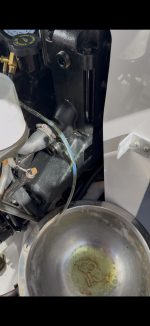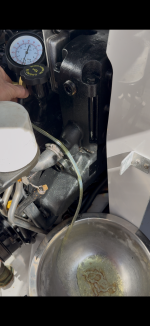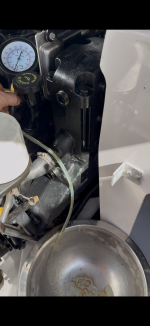Hi All,
So this fuel pressure issue still remains unsolved.
A recap of where we are now at-
- Engine fully rebuilt and still being run in.
- Fuel pressure regulator replaced with new genuine reg. Confirmed correct regulator installed.
- High pressure Fuel pump replaced with new genuine pump and new fuel cooler copper tubing.
- New fuel hose from filter to pump.
- Fuel tank and hoses have been fully cleaned and no blockages.
- Tested even with auxiliary tank installed to confirm no issues with fuel delivery.
With the boat out of water we are getting the following fuel pressure readings-
- When key turned and engine not turned over - around 42 psi.
- Engine running at Idle - around 35 psi
- 1800 rpm - around 35 psi.
- When I disconnect the vacuum hose - around 42 psi.
We have also ran the boat in the water and it was running much better but we were not able to test pressure during that trial.
So from my understanding of the results, the fuel pressure is close to being correct when fuel pump is primed (key turned) but when engine runs it drops down by about 7 psi when the vacuum hose is connected.
The question i now have is- if the fuel pressure regulator is set to 43psi and we are getting a vacuum line drop of around 7 psi at 1800 rpm which I am led to believe is normal vacuum drop, how can the manual require the fuel pressure to be 43 psi at 1800 rpm when there is a vacuum present?
Or is the manual saying the the fuel pressure differential access the manifold needs to equal 43psi which we would be close to achieving?
Sorry to revive such an old thread but I thought I’d come back now that we have done more diagnoses and work. Thankyou all again in advance.























